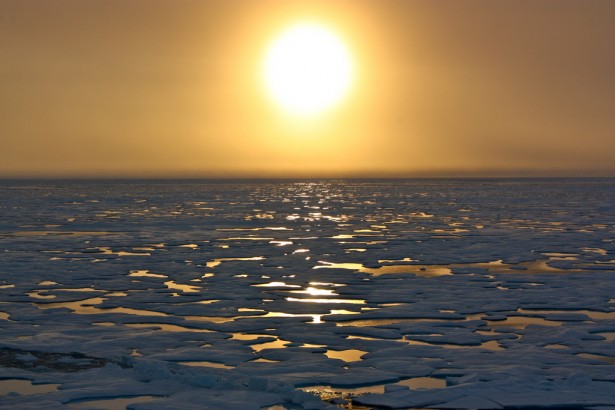The United States space agency NASA has turned its gaze inward—under the Arctic Ocean, to be exact—and discovered a veritable rainforest of phytoplankton bloom beneath the ice.
It’s the complete opposite of what scientists expected, since the single-celled organism was thought to need massive amounts of sunlight for photosynthesis to take place, and they believed there was only enough during summer.
Phytoplanktons are single-celled organisms that survive by photosynthesis and form the basis of the Arctic food web, according to the journal Science, which published the study on June 7. The organisms support zooplankton, fish and migratory species including Arctic terns, gray whales and everything in between. They need nutrients and light to survive.
There was some indication that under-ice phytoplankton was growing in the Barents Sea and Beaufort Sea, as well as under the Canadian Arctic Archipelago, the website OurAmazingPlanet reported, but they never imagined anything like this: “a massive green under-ice bloom” extending nearly 100 feet deep and more than 60 miles across under the Chukchi Sea between Siberia and Alaska, Science said.

The bloom that is worrisome to scientists. Credit: NASA
“As someone who has been studying polar marine ecosystems for 25 years, I had always thought that the idea of under-ice phytoplankton blooms was nonsense,” said researcher Kevin Arrigo, a biological oceanographer at Stanford University in California, to the website Our Amazing Planet. “There is simply not enough light getting through the ice into the ocean for them to grow.”
However, down there out of sight even to satellites, the stuff is reproducing like rabbits. It is about four times more plentiful under the ice than in open waters.
“The idea that phytoplankton can not only bloom under 3-foot-thick ice but that they can reach numbers that put their open-water counterparts to shame was a complete surprise,” Arrigo told OurAmazingPlanet. “It means we have to rethink many of our ideas about how the Arctic Ocean ecosystems function.”
The discovery was made during the course of the ICESCAPE cruise, which stands for Impacts of Climate on EcoSystems and Chemistry of the Arctic Pacific Environment. They were studying the effects of declining sea ice levels on ocean life, OurAmazingPlanet said.
While scientists don’t think the winter ice will ever disappear completely, there could be trouble among fish species that need nutrients higher up the food chain than the microscopic animals. In addition, the blooms are being triggered earlier by the warming of the Arctic, Arrigo told MSNBC. Below, an explanation of phytoplankton, its bloom and the troubles that a change in quantity and schedule might cause.
